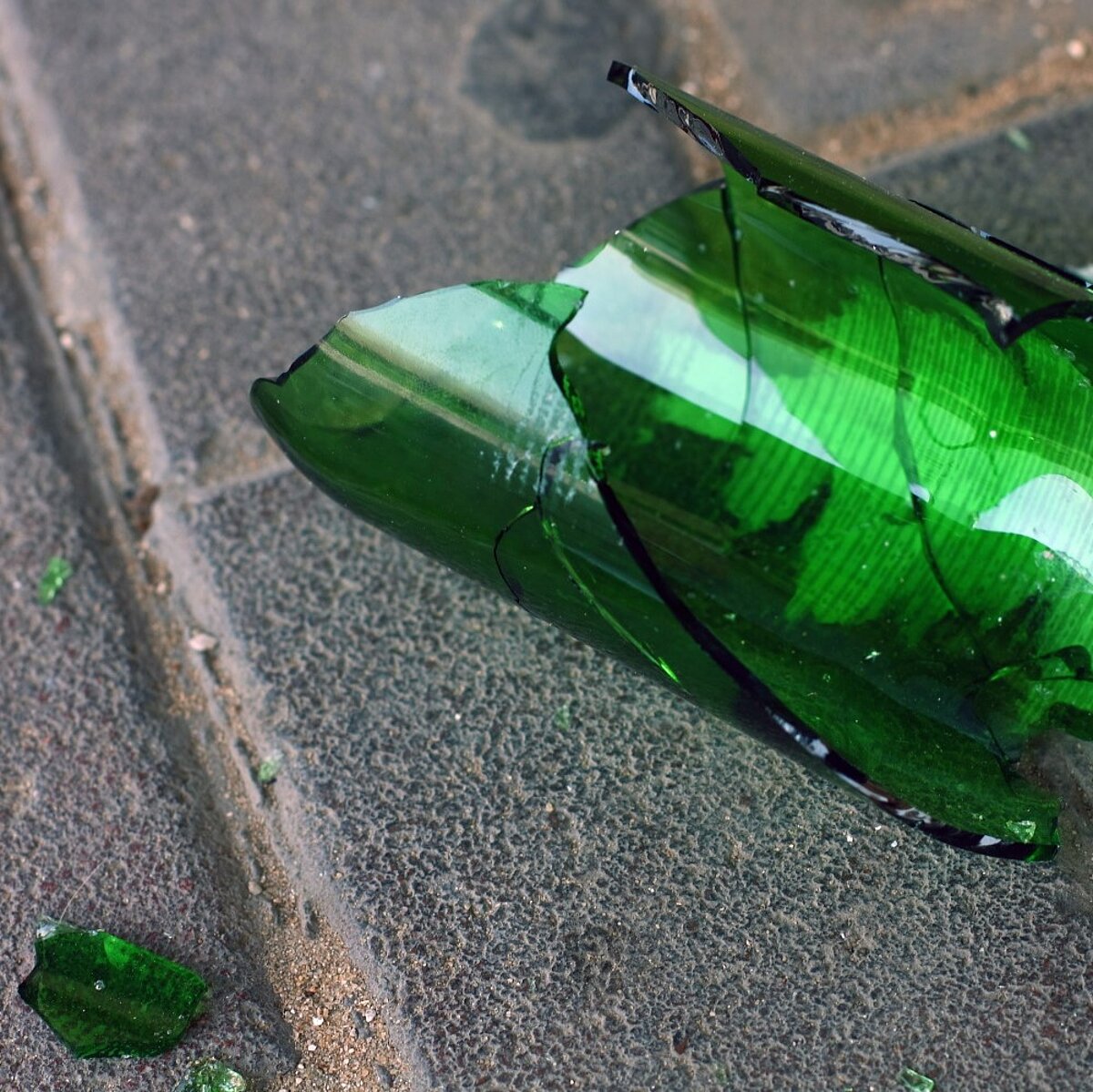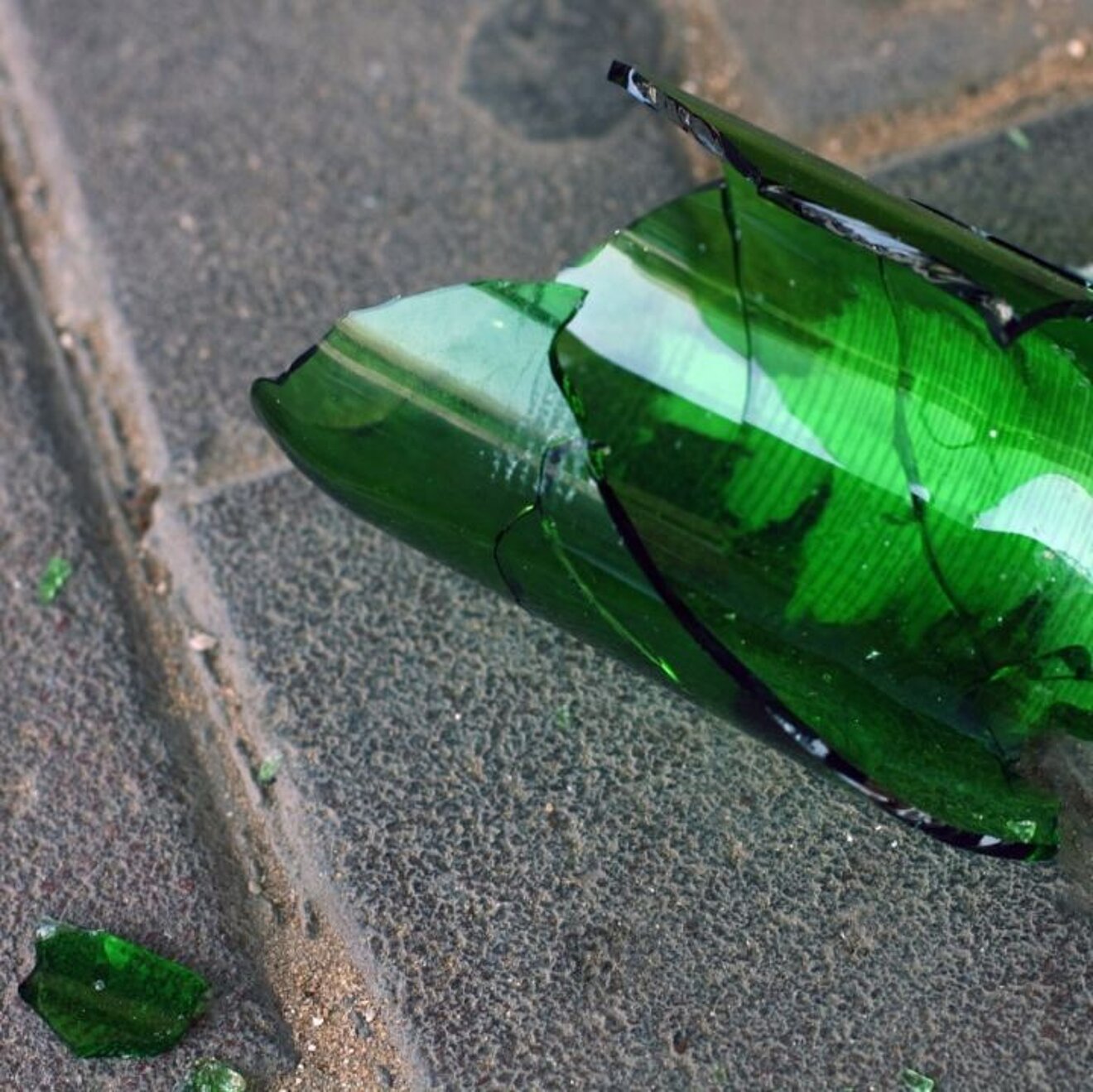Drop simulation


Task / Calculation
If your cell phone falls on the tiled bathroom floor and the display shows the typical spider pattern, you immediately know what we're talking about here. Things can fall on the floor due to carelessness, topple over or be thrown in a package during reloading, and should show as little damage as possible afterwards. For example, a cell phone will survive a fall on the bathroom floor in its packaging carton without damage, and in a plastic case the damage is often limited. But the food industry also faces similar challenges.
The milk bottles that were once commonplace have given way to cardboard packaging that can normally withstand a fall from the height of the shopping cart without damage. You wouldn't necessarily expect this from a glass bottle. When the bottle video below was created, such effects could just be described mathematically, but that was also a while ago. Therefore, we would have to give it an H-mark for "Historic". Today we can examine washing machines, dishwashers, cell phones, construction lamps, milk cartons, yogurt pots, containers with critical liquids with or without packaging to see what happens to the devices and or the packaging. If there is a plate in the dishwasher, we can also evaluate how it would fare after falling off the forklift. The question that always arises in a case simulation is whether the component will break or only be damaged, whether the packaging will break, i.e. is the packaging sufficient or is it even possible to save on packaging material? For example, 10,000 dishwashers are built per day in a factory not too far from us, and it makes a difference whether 1 € of Styrofoam can be saved per packaging or not.
If a pocket watch falls on the tiled bathroom floor, it has only scrap value, if it falls on a cushion, nothing happens to it. It's all a matter of acceleration or mass and spring travel. The packaging takes over the function of the cushion and reduces the acceleration that would otherwise act on the device to a small fraction. To get an idea of this: When a hard object is dropped from a height of 2 m onto a hard floor, accelerations of up to 10,000 m²/s or a thousand times the acceleration due to gravity act. Admittedly only for a short time, but enough to destroy a lot.
However, one property of materials helps: if a material is stretched very quickly, it has an apparently higher strength than if it is pulled very slowly. This is known as strain rate dependence. However, in terms of magnitude, we are talking about a factor of 2 at best for typical applications. How a material behaves under short-term loading must be determined in tests using specimens. If the strain-rate-dependent behavior is known, this can be taken into account in the simulation. A glass bottle that would break at a calculated drop height of 0.80 m will not burst until a drop height of 1.20 m if the strain rate is taken into account. In packaging, the behavior of the packaging material, consisting of cardboard, film and Styrofoam, can be taken into account in the same way as the packaged components themselves. Often, however, drop scenarios must be demonstrated in which there is no protective wrapping. Also clip connections must not loosen, e.g. with the former cell phones. One of our customers manufactures plastic valves for the automotive industry that weigh only a few grams. The specifications state that the valve must be able to withstand a fall from a height of 2 m without damage or even impairment of the function, so that something can go wrong during assembly without the valve immediately taking a step.
Computationally, drop tests are transient tests that are usually solved with explicit procedures and software packages such as ABAQUS or LS-DYNA. Failure criteria are stored in the computational model at which plastic deformations or the exceeding of the fracture limit occur.
Goal / Benefit
With the help of a drop test, products can already be examined in the design phase with regard to the necessary requirements concerning various drop or fall scenarios. In doing so, any weak points can be identified at an early stage.
In summary:
- Utility articles must be functional after a predefined fall
- Packaging must protect its contents during predefined falls
- Containers must be designed in such a way that the liquid or gas cannot escape after a fall
- Clip connections must not come loose
Example bottle (H)
In the following practical example, the drop test was combined with a liquid content of a bottle (CEL). If an element is 100% damaged in the simulation, it is deleted and no longer has any influence on the further FEM calculation.
Video

Fall simulation of a construction lamp
Construction lamps must survive a fall from a trestle ladder from a height of 2 m without damage. There must be no loosening of the clip connections.
Video
Case simulation of a welding machine
Welding equipment must be able to withstand falls from low heights.
Video
Case simulation of a dishwasher
Dishwashers must survive a 60 cm drop from a forklift in their packaging without any functional impairment or visible damage.
Keywords
- Impact
- Drop test
- Explicit calculation
- Drop simulation
- Drop test
- Drop test
- Drop
- Packaging simulation